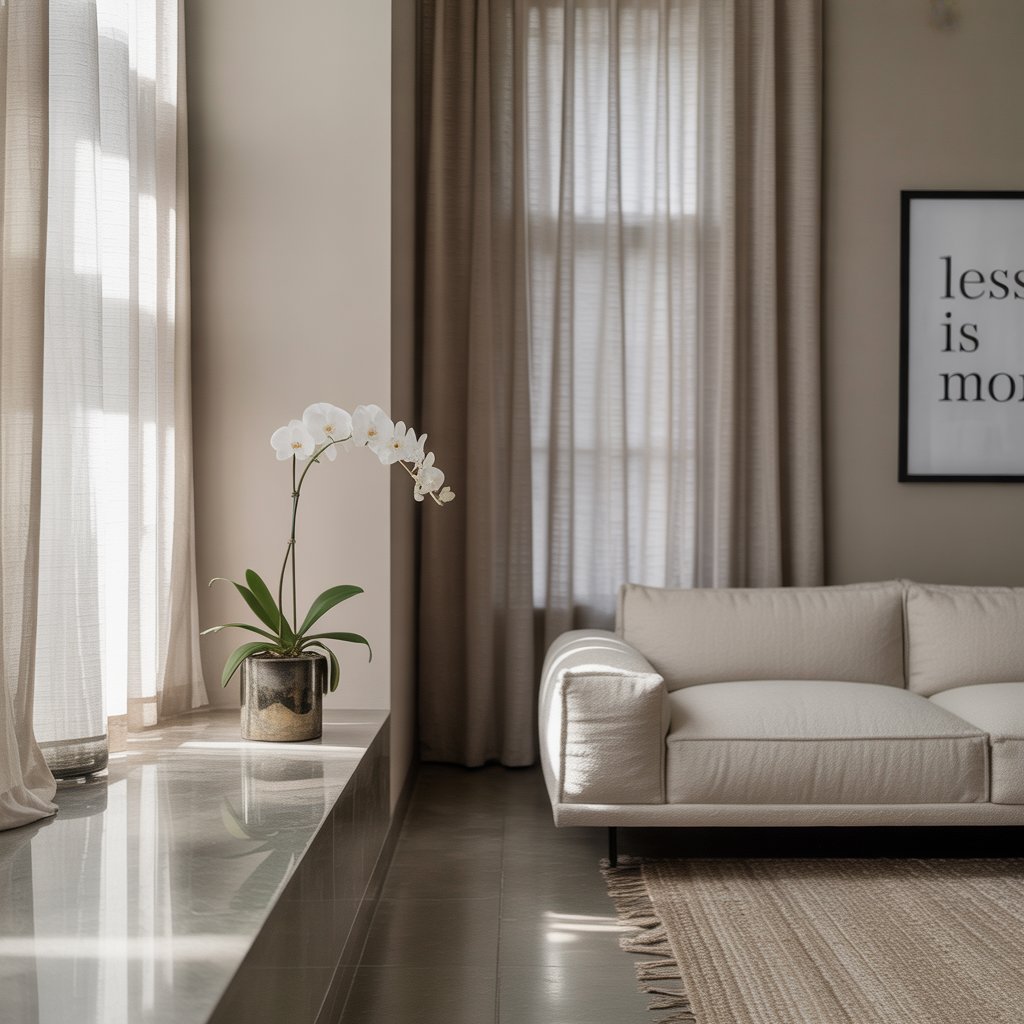Minimalism is more than a design style—it’s a lifestyle philosophy focused on simplicity, functionality, and intentional living. In interior design, minimalism emphasizes clean lines, uncluttered spaces, and purposeful choices that create beauty without excess. The result is a home that feels calm, spacious, and timeless.
Here are practical minimalist decoration ideas for every room in your home.
1. The Living Room: Clean, Cozy, and Functional
The living room often sets the tone for the rest of the home.
- Choose a neutral color palette with whites, grays, or earthy tones.
- Invest in a comfortable sofa with simple lines.
- Use one or two accent pieces, such as a coffee table book or a sculptural lamp.
- Keep walls free of excess decoration—one large artwork is better than many small ones.
2. The Bedroom: A Restful Retreat
Minimalist bedrooms promote peace and relaxation.
- Opt for a low-profile bed frame and simple bedding in solid colors.
- Keep nightstands clutter-free with only essentials like a lamp and a book.
- Use soft, natural fabrics for curtains and rugs.
- Store items out of sight to maintain a clean look.
3. The Kitchen: Simplicity Meets Functionality
A minimalist kitchen blends practicality with style.
- Stick to clean surfaces—avoid cluttering countertops with appliances.
- Use hidden storage solutions like pull-out drawers and built-in cabinets.
- Incorporate neutral tones with natural materials like wood and stone.
- Add a single decorative element, like a plant or ceramic bowl, for warmth.
4. The Bathroom: Calm and Spa-Like
Bathrooms can feel luxurious with minimalist design.
- Choose light colors to enhance a sense of space.
- Install floating vanities or shelves for a sleek look.
- Use glass shower doors instead of heavy curtains.
- Limit decoration to essentials like neatly folded towels or a simple vase.
5. The Dining Room: Focused and Welcoming
Minimalism in the dining area creates a balanced, inviting atmosphere.
- Select a sturdy dining table with clean lines.
- Keep chairs simple and comfortable, with neutral upholstery.
- Use pendant lighting as a statement piece.
- Avoid overdecorating—one centerpiece, such as a bowl of fruit, is enough.
6. The Home Office: Clarity and Productivity
Minimalism boosts concentration by reducing distractions.
- Invest in a functional desk and ergonomic chair.
- Use hidden storage to keep supplies out of sight.
- Limit decor to a motivational artwork or plant.
- Ensure good lighting, preferably natural.
7. Entryway: First Impressions Matter
The entryway introduces your minimalist style to visitors.
- Keep only essentials, like a small bench and coat hooks.
- Add a simple rug to define the space.
- Use a mirror to create the illusion of openness.
Tips for a Successful Minimalist Home
- Declutter regularly: Minimalism is not about having nothing, but about keeping only what serves a purpose or brings joy.
- Choose quality over quantity: Invest in timeless, durable pieces.
- Focus on natural light: Keep windows uncovered or use sheer curtains.
- Add warmth with texture: Combine wood, cotton, and linen to avoid a sterile look.
Final Thoughts
Minimalist decoration is about creating balance, peace, and intention in every room. By focusing on quality, functionality, and simplicity, you can design a home that feels timeless and clutter-free, yet still warm and welcoming. Minimalism doesn’t mean living without—it means living with purpose.
